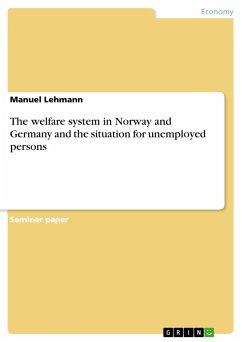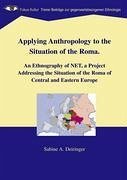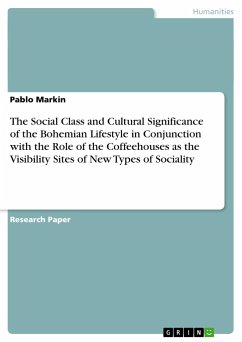Seminar paper from the year 2009 in the subject Economics - Job market economics, grade: C, Lillehammer University College, language: English, abstract: Even in a time as we experience now, where a lot of companiesbecoming bankrupt, it is more important than ever, to have a look on those people who are directly affected by the economic crisis. These are especially people who lost their job in consequence of cutbacks in manpower or bankruptcy.It is interesting to see how the European countries are working together to decrease the aftermaths of the present crisis.In this essay I will analyse in which way the German and the Norwegian Social system works, especially the facilities for unemployed people. And I will try to show the historical and organisational differences of both systems.In this reason I will give a short overview over the different "welfare regimes" in Europe first and describe how to classify them into three big groups, according to Gøsta Esping-Andersen, who workeda lot in this field of study.Afterwards I will have a look on the historical and organisational design of the social system of one of the world's richest countries - Norway. Inpoint 3b I will describe how Norway manages the unemployment and what kind of benefits unemployed persons will get.After that, in point 4, I will examine the case of Germany, as thebirthplace of the welfare state in Europe. As I divided the chapter about Norway into one historical part and one part about the benefits for unemployed persons, I did it with this part as well.At the end of this essay I will make a short conclusion, in which I will discuss the pros and cons of both systems and present, why it is so difficult to find the right balance in the level of unemployment benefits.
Hinweis: Dieser Artikel kann nur an eine deutsche Lieferadresse ausgeliefert werden.
Hinweis: Dieser Artikel kann nur an eine deutsche Lieferadresse ausgeliefert werden.








